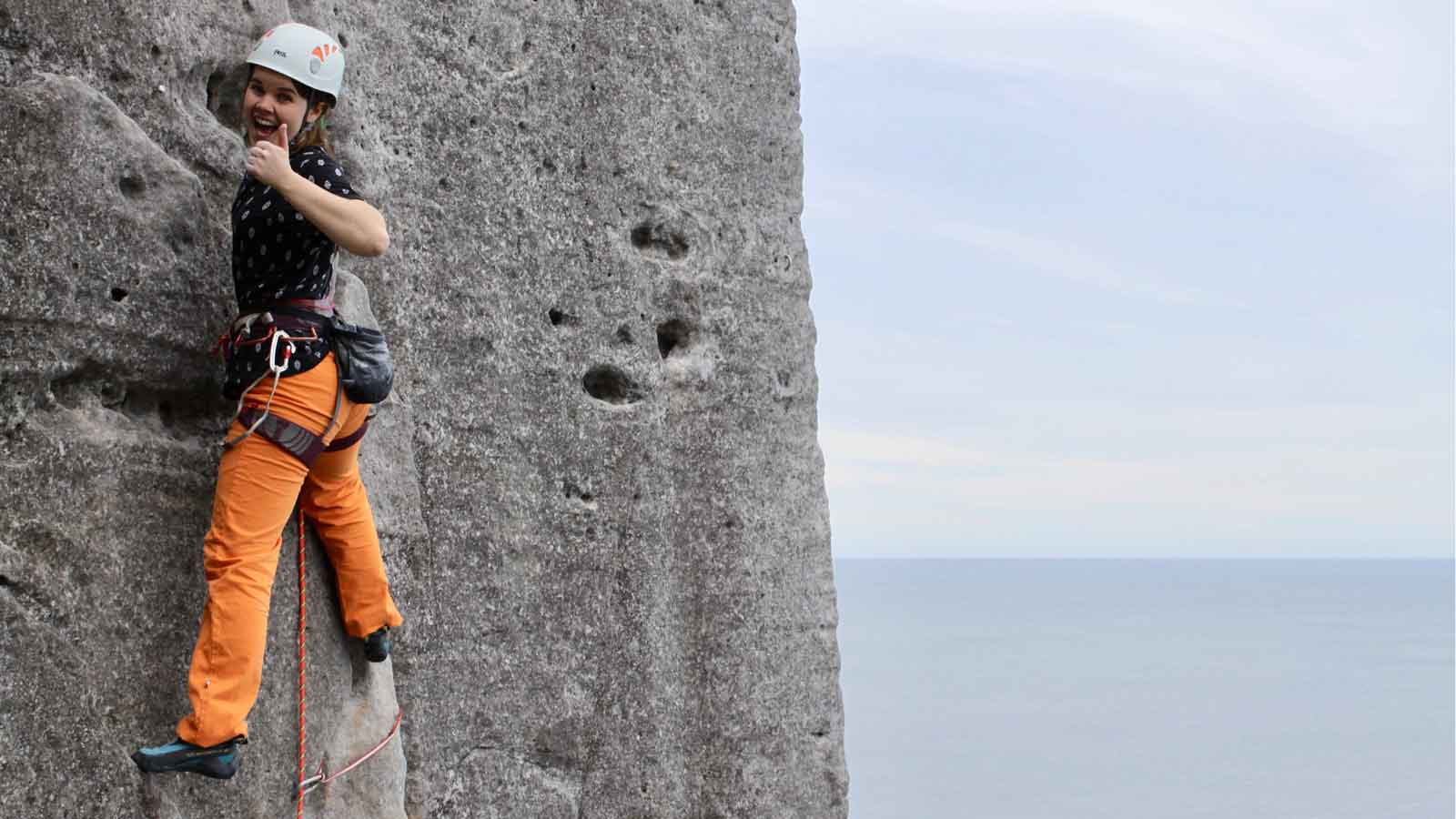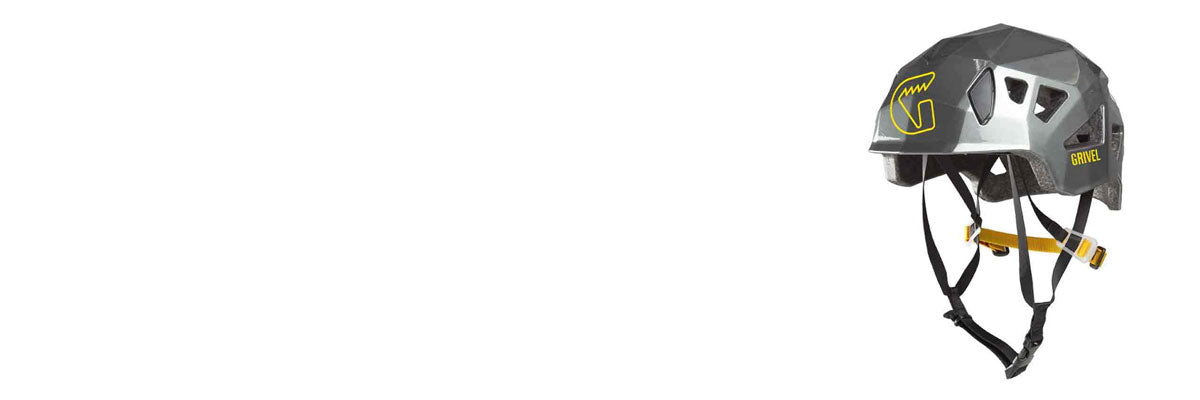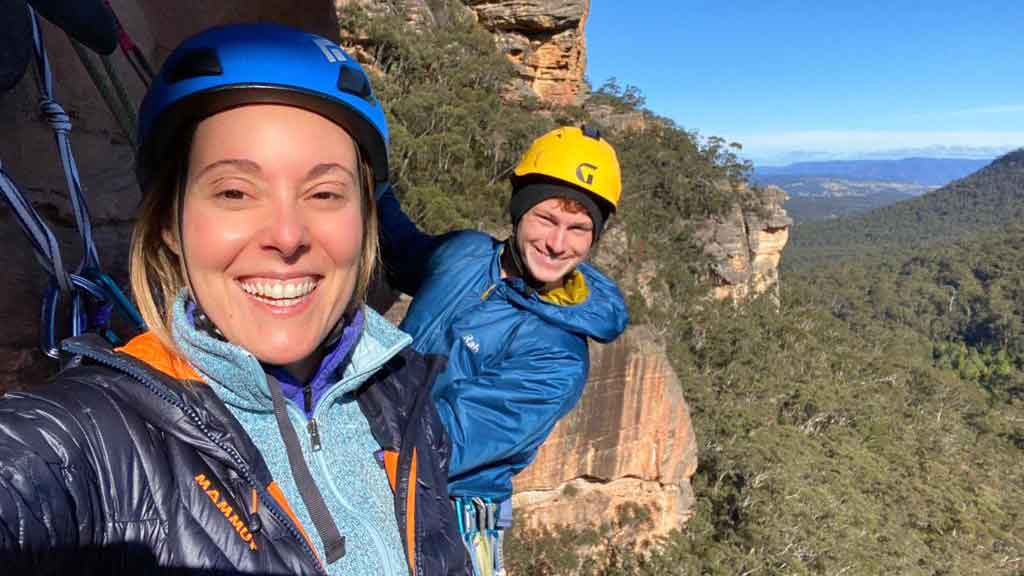Rock Climbing Helmet Buyers Guide

Climbing is a potentially dangerous activity and therefore exposes you to risk of injury. To mitigate that risk there are some pieces of gear it is highly advised you invest in. One of these is a helmet, which should be considered a crucial part of your outdoor climbing kit. Whilst climbers may choose not to wear a helmet in certain situations, there are many routes and a range of worst-case scenarios, from uncontrolled falls to falling rocks and gear, when a helmet will undoubtedly help protect you. Being alive is cool, being safe is cool, wearing a helmet is the coolest.
Now that I have convinced you helmets are not only stylish but also lifesaving, let's figure out what to look for when shopping. It is important to be 100% happy with your helmet purchase because like most safety equipment you CANNOT return it after it leaves the store. So, we highly suggest trying on helmets in store if that option is available for you. Worst case, if you are unable to come in, whip out the measuring tape.

Climbing Helmet Protection
At first glance all the helmets might seem quite similar but there are some key variations and features across helmets to consider when buying. The first of which is to understand that helmets are designed for different impacts. With climbing almost all head injuries are from falling rocks and debris, that is why all climbing helmets are fully rated for top impact. Some choose to have less protection on the sides for reduced weight and increased ventilation while others are rated for side as well as top impact. The Petzl Boreo for example is rated on the top and sides for extra protection.

Climbing Helmet Construction
The next thing to consider with climbing helmets is their construction. Although there are major differences with climbing helmet construction, for the user it basically all boils down to durability verses weight. The majority of the helmets have a tough polycarbonate shell with a foam inner either made of expanded polypropylene (EPP) or expanded polystyrene (EPS). These helmets are durable and meant to last. They are great for scraping through chimneys, knocking about in canyons or just generally throwing them in your kit bag time after time and not having to worry too much. They are designed in a way that they will take hundreds of small impacts, knocks, scrapes and bumps without any worry but then if you get a large impact that cracks the inner foam, it is then due for retirement. The Edelrid Zodiac, Black Diamond Half Dome and Petzl Boreo are examples of this construction. The tradeoff of durability is weight, if that is a concern for you and you’re trying to shed every gram you can, then we can suggest one of the lightweight, predominantly foam helmets. Instead of the structure of the helmet being polycarbonate, the structure of these helmets is the EPS or EPP foam, more like a cycling helmet. Sometimes they are just the foam but other times they have a very thin partial or full covering of polycarbonate. This style is typically two thirds lighter than a polycarbonate helmet but they can be up to half the weight with other models. They will take major life-threatening impacts just as well as the heavier polycarbonate modes and they have full side and rear impact protection as well. However, they will slowly degrade over time due to small knocks and you may have to retire a helmet even though it has not taken a big blow. Examples of this style are the Grivel Stealth which has a thin polycarbonate shell layer integrated with the foam, or the Edelrid Salathe helmet which has a polycarbonate shell covering only the top, the rest of the helmet being exposed foam.

Climbing Helmet Size Adjustment
Next consider what kind of adjuster you would prefer. There are a couple options, the dial or a slider are the more common adjusters, great for quick and easy adjusting. If you are going for an ultra-light helmet, then the adjuster will be a sliding strap form. It is a little less user friendly but worth it if you are trying to cut some grams off your kit.
Majority of climbing helmets come in two sizes: S/M or M/L. Once you have picked a size to try on, adjust the helmet, loosing or tightening the circumference adjuster till the helmet is snug but not too tight. It’s important to make sure the helmet does not move when you look up or down. We suggest a couple head shakes to make sure it’s a snug fit. Ideally you do not want to be at the upper size limit of your helmet. However the middle of the helmet sizing allows for some room to tighten the head harness smaller or larger though which can be very useful. Consider if you wanted to fit a beanie, balaclava or hat under the helmet, this is especially important for alpine climbers so size accordingly. Also consider if you might want to get a perm, if so make sure the size gives you room to expand. It all has to fit comfortably under your helmet.

Now that you have selected the perfect helmet, check yourself out in the mirror, see how cool and hot you are going to look protecting your brain. Happy Climbing!!!
Feature Breakdown of Popular Rock Climbing Helmet Models

Petzl Boreo Helmet
- Fully rated on top, front and sides
- Comes in size S/M & M/L
- Durable style Polycarbonate shell with a full foam inner
- Dial adjuster
- Best asset - Durability
- Available in other colours
- Best uses - rock climbing, canyoning, alpine climbing
For more on the Petzl Boreo Helmet Click HERE

Edelrid Shield II Helmet
- Fully rated on top, front, back and sides
- Comes in size 1 & 2
- Dial adjuster
- Lighter style Polycarbonate shell with a full foam inner
- Best asset - Lightweight
- Available in other colours
- Best uses - rock climbing, alpine climbing
For more on the Edelrid Shield II Helmet Click HERE

Black Diamond Half Dome Helmet
- Fully rated on top only
- Comes in size S/M & M/L
- Slide adjuster
- Durable style Polycarbonate shell with a partial foam inner
- Best asset - Durability
- Available in other colours
- Best uses - rock climbing, canyoning
For more on the Black Diamond Half Dome Helmet Click HERE

Edelrid Salathe Helmet
- Fully rated on top, front, back and sides
- Comes in size 1 & 2
- Full Foam construction with Polycarbonate shell covering only the top
- Best asset - Ultralight
- Strap adjuster
- Best uses - rock climbing, alpine climbing
For more on the Edelrid Salathe Helmet Click HERE

Grivel Stealth Helmet
- Fully rated on top, front, back and sides
- Comes in one size
- Lighter style Polycarbonate shell layer integrated with the full foam inner
- Best asset - Ultralight
- Strap adjuster
- Best uses - rock climbing, alpine climbing
For more on the Grivel Stealth Helmet Click HERE

Edelrid Zodiac Helmet
- Fully rated on top, front, back and sides
- Comes in one size
- Dial adjuster
- Durable style Polycarbonate shell with a foam inner
- Best asset - Durability
- Available in other colours
- Best uses - rock climbing, canyoning, alpine climbing
For more on the Edelrid Zodiac Helmet Click HERE

Edelrid Kids Shield II Helmet
- Fully rated on top, front, back and sides
- Comes in one size
- Lighter style polycarbonate shell with a full foam inner
- Best asset - Specialist kids fit
- Dial adjuster
- Best uses - rock climbing, canyoning
For more on the Edelrid Shield Helmet Click HERE

Written By: Hazel Sherritt
